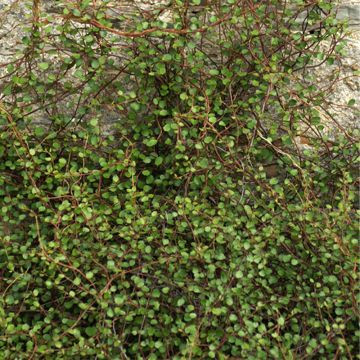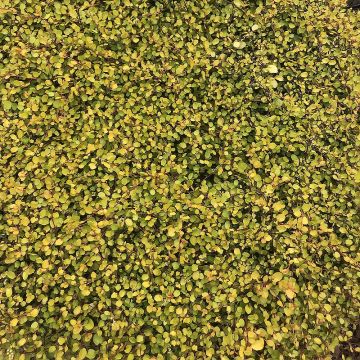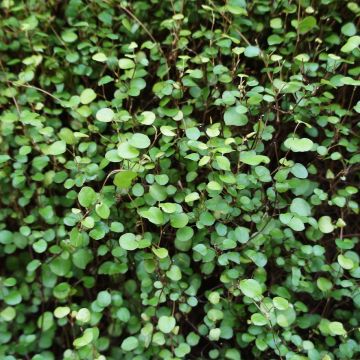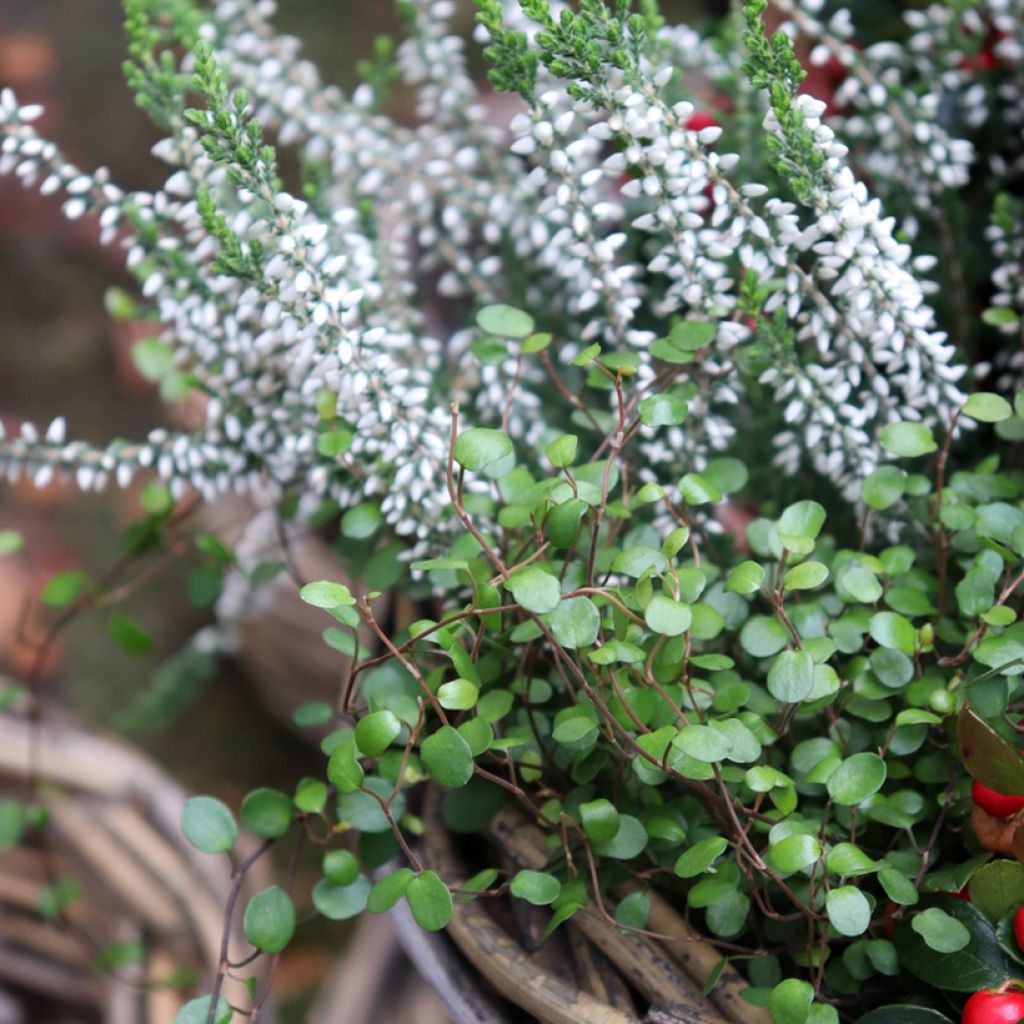

Muehlenbeckia axillaris
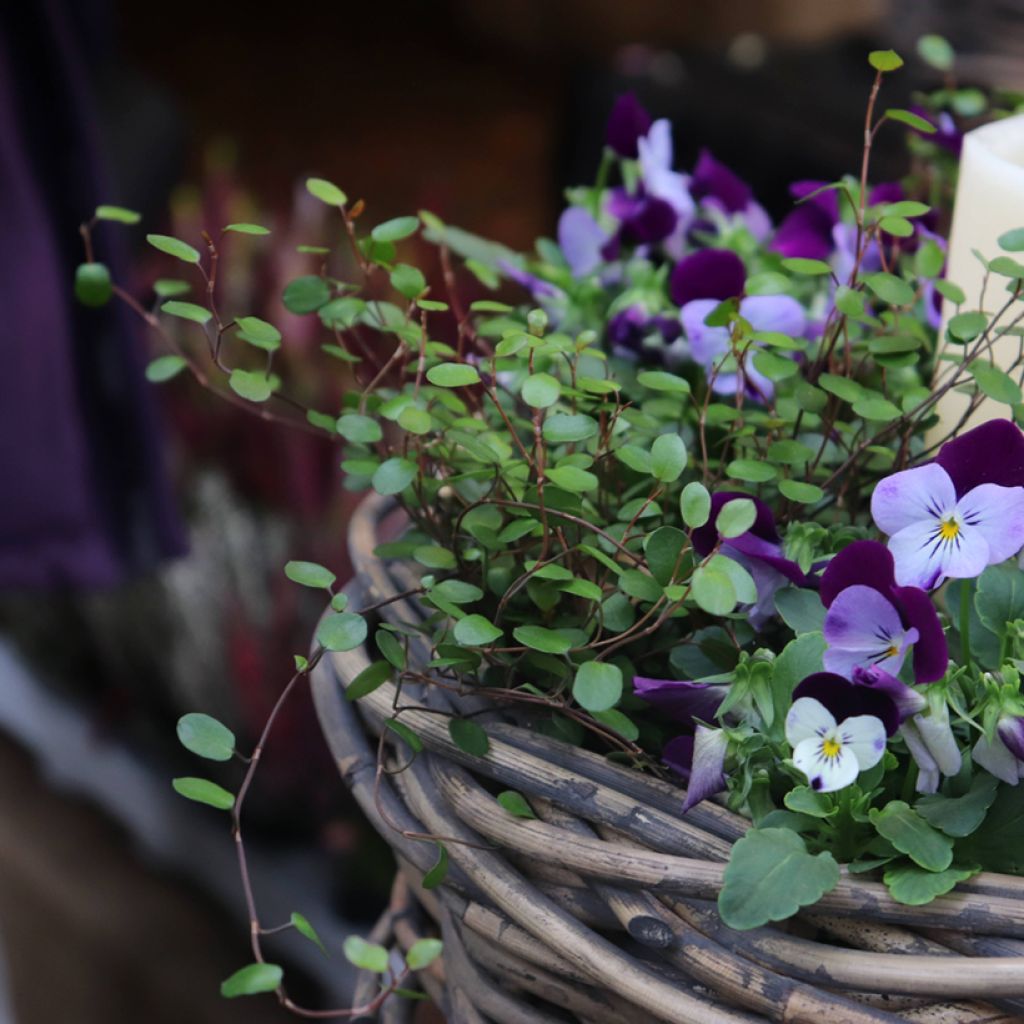

Muehlenbeckia axillaris
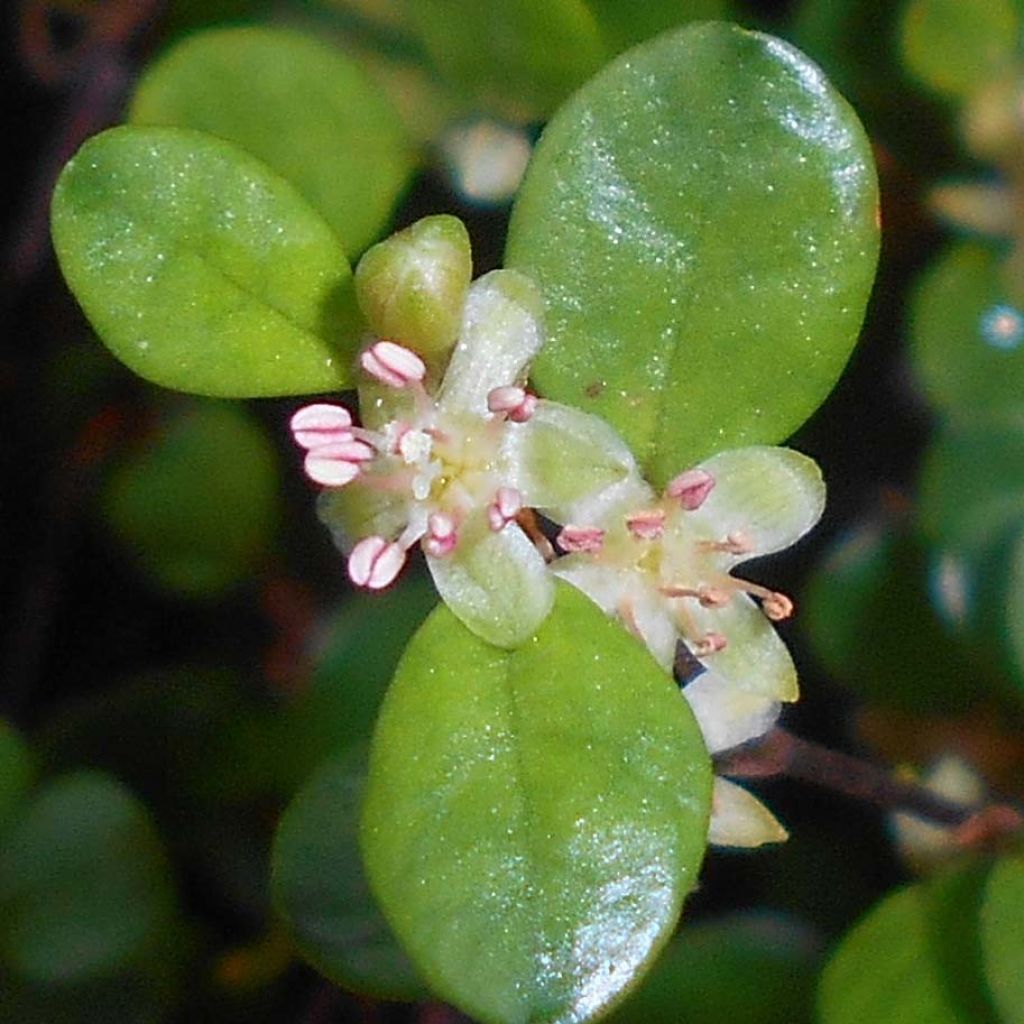

Muehlenbeckia axillaris


Muehlenbeckia axillaris
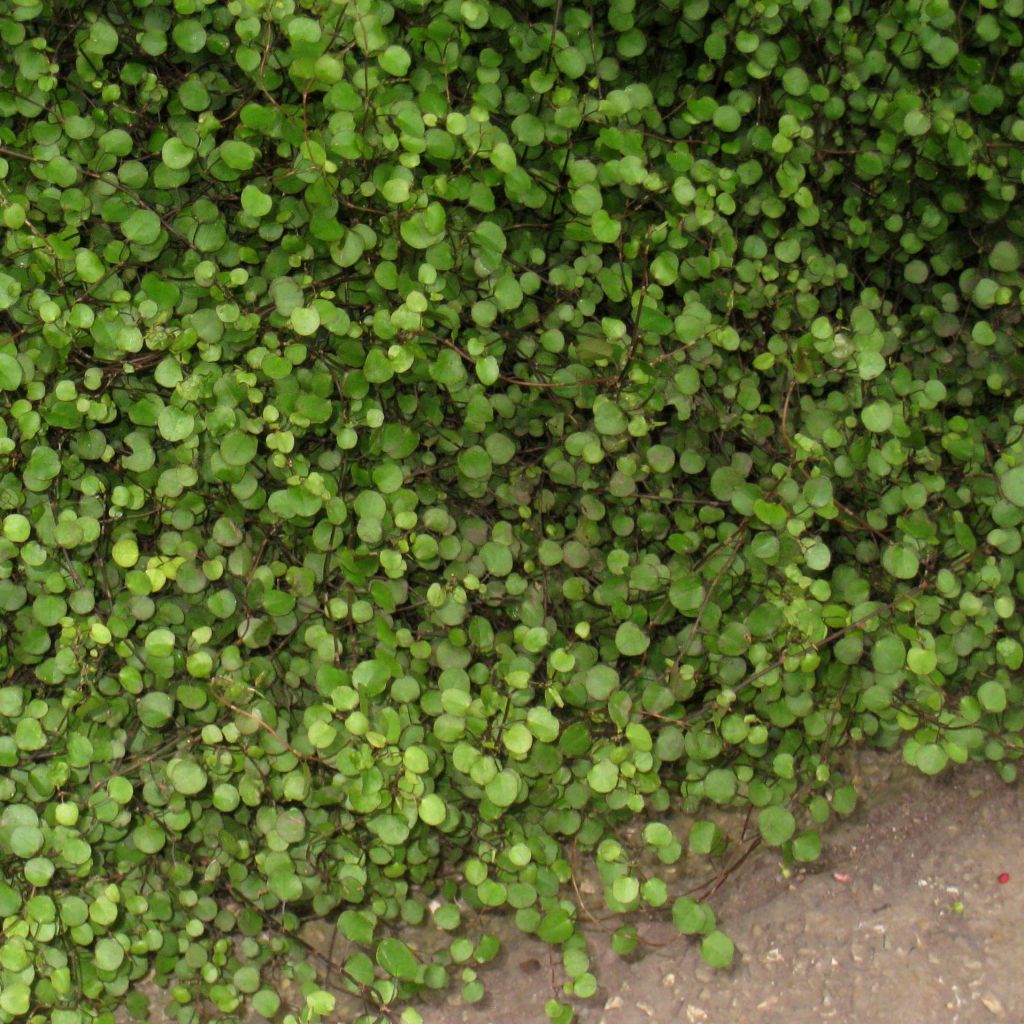

Muehlenbeckia axillaris


Muehlenbeckia axillaris
Muehlenbeckia axillaris
Muehlenbeckia axillaris
Wire Vine
Healthy plant. Good establishment.
Chantal, 21/09/2020
Special offer!
Receive a €20 voucher for any order over €90 (excluding delivery costs, credit notes, and plastic-free options)!
1- Add your favorite plants to your cart.
2- Once you have reached €90, confirm your order (you can even choose the delivery date!).
3- As soon as your order is shipped, you will receive an email containing your voucher code, valid for 3 months (90 days).
Your voucher is unique and can only be used once, for any order with a minimum value of €20, excluding delivery costs.
Can be combined with other current offers, non-divisible and non-refundable.
Home or relay delivery (depending on size and destination)
Schedule delivery date,
and select date in basket
This plant carries a 24 months recovery warranty
More information
We guarantee the quality of our plants for a full growing cycle, and will replace at our expense any plant that fails to recover under normal climatic and planting conditions.

Would this plant suit my garden?
Set up your Plantfit profile →
Description
Muehlenbeckia axillaris, a close relative of Muehlenbeckia complexa (a beautiful New Zealand climbing plant), prefers to spread on the ground of rockeries or hang as light curtains in basins and hanging baskets on a patio. Its slender stems are covered with small square leaves that persist more or less in winter, quickly forming an effective ground cover in the garden to limit the spread of weeds. Easy to grow in mild climates, extremely versatile and adaptable, this unusual bush is perfect for adorning the base of trees or shrubs in dry climates. In more humid regions, it beautifully decorates a sunny rockery or a vegetated wall, stabilises an unattractive slope, or trains on a trellis.
Muehlenbeckia axillaris (synonym Pseudanthus tasmanicus) is a plant from the Polygonaceae family, a cousin of sorrel and knotweed. It is native to Tasmania, Australia, and New Zealand. In this dioecious bush, there are plants that bear fertile female flowers distinct from those that bear male flowers. Its foliage persists until -6°C (21.2°F) in winter. Its stems can be destroyed by frost, but the stump regenerates vigorously in spring until -10°C (14°F) in well-drained soil.
It tolerates relatively dry and well-drained soil, and withstands wind and sea spray. This bush has a low and creeping habit. It develops long, reddish-brown to blackish stems, covered with hairs that can root upon contact with the ground. Its growth is rapid, quickly forming a carpet 10 to 20cm (4 to 8in) tall and 2m (7ft) in diameter. Its foliage consists of tiny leaves a few millimetres long, almost square in shape, and arranged alternately along the branches. They are slightly glossy, bright green and rather light, sometimes edged with reddish tones. Flowering occurs in July-August in our climates. The flowers are tiny, gathered in clusters of 2 to 4 units measuring less than 1cm (1in) in diameter. Their colour is greenish, white, or white-pink.
The main advantage of Muehlenbeckia axillaris is undoubtedly its versatility: it can be planted both in the ground in mild regions, and in pots or hanging baskets to decorate a patio or balcony. It is a carefree plant that finds its place and thrives among other plants, as ground cover in rockeries, under shrubs and trees whose root competition it tolerates, alone or with other plants. Plant with small spring bulbs (crocuses, narcissus, botanical tulips, and hyacinths) to bring some colour to the garden or flowering pots. It can also be placed above low walls, for example with creeping rosemary, aubrietas, and wall bellflowers. It forms a very green carpet that enhances all its neighbouring perennial or shrubby plants, while preventing the proliferation of weeds. It is also useful for stabilising slopes, along with periwinkles, Algerian ivy, and creeping junipers, for example.
Report an error about the product description
Muehlenbeckia axillaris in pictures
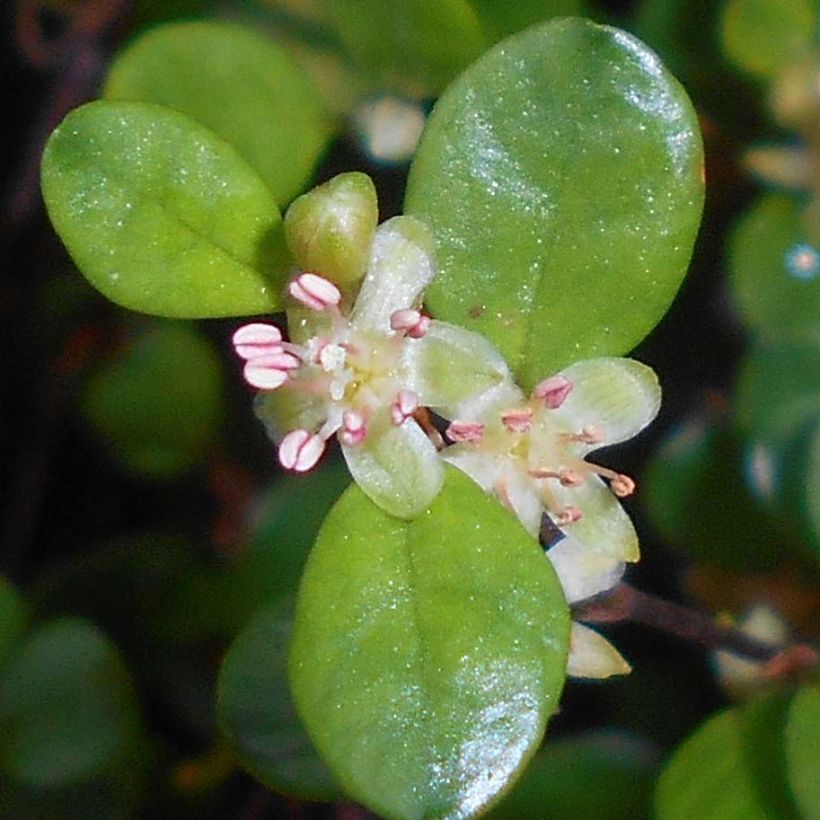

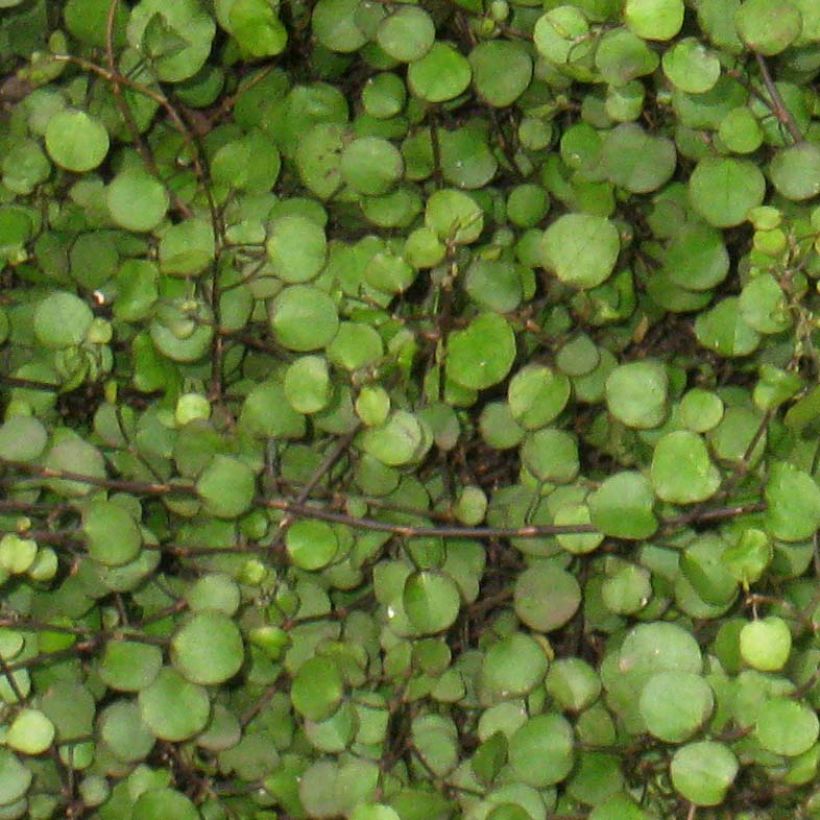



Plant habit
Flowering
Foliage
Botanical data
Muehlenbeckia
axillaris
Polygonaceae
Wire Vine
Oceania
Other Muehlenbeckia
View all →Planting and care
Plant according to the regions. Plant in spring, after the last frost, in areas with limited hardiness. In hot and dry regions, plant in early autumn. Choose a sunny exposure in mild and humid climates, or partial shade (shade in the afternoon and evening) in hot and dry regions. It prefers sandy, rocky, poor, well-drained, slightly acidic to neutral soil. Ultimately, it is not very demanding in terms of soil, even tolerating the presence of limestone. It is an extremely robust plant that only fears strong frosts. In well-drained soil, it will withstand brief frosts of around -10°C (14°F).
Muehlenbeckia axillaris is quite drought-resistant once well established. Monitor watering during the first 2 summers. Watering will become optional or unnecessary afterwards, except in the case of abnormally prolonged drought. Regular but spaced watering from spring to the end of summer, as well as adding compost in spring, allows for its cultivation in pots under good conditions.
Often sold as an indoor plant, Muehlenbeckia does not tolerate the warm and dry atmosphere of our interiors. However, growing in outdoor pots presents no difficulty: compose a mixture of potting soil, coarse sand, and garden soil. Water regularly and apply some green plant fertiliser every 15 days during the growing season, from March to August. You can overwinter your potted plants in a very bright room, protected from extreme cold. Watering should be reduced in winter.
Planting period
Intended location
Care
Planting & care advice
-
, onOrder confirmed
Reply from on Promesse de fleurs
Haven't found what you were looking for?
Hardiness is the lowest winter temperature a plant can endure without suffering serious damage or even dying. However, hardiness is affected by location (a sheltered area, such as a patio), protection (winter cover) and soil type (hardiness is improved by well-drained soil).

Photo Sharing Terms & Conditions
In order to encourage gardeners to interact and share their experiences, Promesse de fleurs offers various media enabling content to be uploaded onto its Site - in particular via the ‘Photo sharing’ module.
The User agrees to refrain from:
- Posting any content that is illegal, prejudicial, insulting, racist, inciteful to hatred, revisionist, contrary to public decency, that infringes on privacy or on the privacy rights of third parties, in particular the publicity rights of persons and goods, intellectual property rights, or the right to privacy.
- Submitting content on behalf of a third party;
- Impersonate the identity of a third party and/or publish any personal information about a third party;
In general, the User undertakes to refrain from any unethical behaviour.
All Content (in particular text, comments, files, images, photos, videos, creative works, etc.), which may be subject to property or intellectual property rights, image or other private rights, shall remain the property of the User, subject to the limited rights granted by the terms of the licence granted by Promesse de fleurs as stated below. Users are at liberty to publish or not to publish such Content on the Site, notably via the ‘Photo Sharing’ facility, and accept that this Content shall be made public and freely accessible, notably on the Internet.
Users further acknowledge, undertake to have ,and guarantee that they hold all necessary rights and permissions to publish such material on the Site, in particular with regard to the legislation in force pertaining to any privacy, property, intellectual property, image, or contractual rights, or rights of any other nature. By publishing such Content on the Site, Users acknowledge accepting full liability as publishers of the Content within the meaning of the law, and grant Promesse de fleurs, free of charge, an inclusive, worldwide licence for the said Content for the entire duration of its publication, including all reproduction, representation, up/downloading, displaying, performing, transmission, and storage rights.
Users also grant permission for their name to be linked to the Content and accept that this link may not always be made available.
By engaging in posting material, Users consent to their Content becoming automatically accessible on the Internet, in particular on other sites and/or blogs and/or web pages of the Promesse de fleurs site, including in particular social pages and the Promesse de fleurs catalogue.
Users may secure the removal of entrusted content free of charge by issuing a simple request via our contact form.
The flowering period indicated on our website applies to countries and regions located in USDA zone 8 (France, the United Kingdom, Ireland, the Netherlands, etc.)
It will vary according to where you live:
- In zones 9 to 10 (Italy, Spain, Greece, etc.), flowering will occur about 2 to 4 weeks earlier.
- In zones 6 to 7 (Germany, Poland, Slovenia, and lower mountainous regions), flowering will be delayed by 2 to 3 weeks.
- In zone 5 (Central Europe, Scandinavia), blooming will be delayed by 3 to 5 weeks.
In temperate climates, pruning of spring-flowering shrubs (forsythia, spireas, etc.) should be done just after flowering.
Pruning of summer-flowering shrubs (Indian Lilac, Perovskia, etc.) can be done in winter or spring.
In cold regions as well as with frost-sensitive plants, avoid pruning too early when severe frosts may still occur.
The planting period indicated on our website applies to countries and regions located in USDA zone 8 (France, United Kingdom, Ireland, Netherlands).
It will vary according to where you live:
- In Mediterranean zones (Marseille, Madrid, Milan, etc.), autumn and winter are the best planting periods.
- In continental zones (Strasbourg, Munich, Vienna, etc.), delay planting by 2 to 3 weeks in spring and bring it forward by 2 to 4 weeks in autumn.
- In mountainous regions (the Alps, Pyrenees, Carpathians, etc.), it is best to plant in late spring (May-June) or late summer (August-September).
The harvesting period indicated on our website applies to countries and regions in USDA zone 8 (France, England, Ireland, the Netherlands).
In colder areas (Scandinavia, Poland, Austria...) fruit and vegetable harvests are likely to be delayed by 3-4 weeks.
In warmer areas (Italy, Spain, Greece, etc.), harvesting will probably take place earlier, depending on weather conditions.
The sowing periods indicated on our website apply to countries and regions within USDA Zone 8 (France, UK, Ireland, Netherlands).
In colder areas (Scandinavia, Poland, Austria...), delay any outdoor sowing by 3-4 weeks, or sow under glass.
In warmer climes (Italy, Spain, Greece, etc.), bring outdoor sowing forward by a few weeks.






























